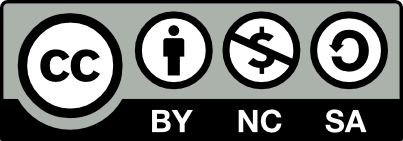[screen 1]
People are capable of having outrageous beliefs.
Not all outrageous beliefs are misinformation. Only one type of outrageous belief concerns disinformation.
There are four major types of outrageous beliefs: (1) individual intuitive; (2) external intuitive; (3) external reflective; (4) false instrumental – disinformation.
[screen 2]
Forming, sustaining, and countering beliefs takes place on six levels: (1) information incidents; (2) information campaigns; (3) rationality; (4) meta-cognition; (5) prophylactics; (6) (de-)radicalisation.
[screen 3]
Level 1 - Information incidents
- After birth, our brain develops from perceiving noise to recognizing subjective causal patterns. This recognition involves formulating and testing causal predictions.
- Confirmation bias helps us disregard unfavorable test results to maintain our existing beliefs about the patterns we think we perceive.
- Presenting evidence can challenge and weaken our confirmation bias.
[screen 4]
Level 2 - Information campaigns
- Our experiences fuel the patterns we perceive. The patterns gradually form broader belief systems.
- As they are rooted in our experiences, we perceive our belief systems as 'normal' and 'objective' and those of others as 'abnormal' and 'subjective' - naïve realism bias.
- Introducing authoritative beliefs in the form of narratives and suppressing conflicting ones can challenge and weaken our naïve realism.
[screen 5]
Level 3 - Rationality
- The brain consists of semi-autonomous modules, resulting in potential inconsistencies within our belief systems.
- Inconsistencies pose a social risk, as they may lead to ostracism. To avoid this, we tend to claim consistency.
- Engaging in logical and critical thinking helps us improve the accuracy of our beliefs.
[screen 6]
- Engaging in logical and critical thinking can reveal our internal contradictions, prompting us to reconsider and revise our beliefs.
- It also helps us to analyse, evaluate, and interpret the information we encounter.
[screen 7]
Level 4 - Meta-cognition
- Based on our past experiences our brain improvises in the now to produce seemingly coherent beliefs.
- When others do catch an incoherence, our brain turns its improvisation into confabulation.
- By reflecting on our thought processes, we can identify and correct these confabulations.
[screen 8]
Level 5 - Prophylactics
- We often fill gaps in our belief systems with beliefs borrowed from others.
- Since our beliefs are closely tied to those of our peer groups, changing them can come with significant social costs.
- By meeting our basic needs beyond the desire for belonging, we strengthen our resilience.
[screen 9]
- Increased resilience helps us separate our sense of identity from our beliefs.
- This resilience gives us the confidence and humility to rethink and unlearn our beliefs.
[screen 10]
Level 6 - (De-)radicalisation
- We belong to multiple groups, each of which influences and shapes our beliefs.
- As groups become more polarised, they tend to demand greater conformity from their members.
- When a group radicalises and our personal beliefs diverge, we may choose to dissent or leave and seek out less rigid, less polarising alternatives.
[screen 11]
Selected literature
- Nick Chater – The mind is flat (2018)
- Robert Kurzban – Why everyone (else) is a hypocrite (2010)
- David McRaney – How minds change (2022)
- Steven Sloman & Philip Fernbach – The knowledge illusion (2017)
- Dan Sperber - Intuitive and reflective beliefs (article, 1997)
- Jay Van Bavel & Dominic Packer – The power of us (2021)

